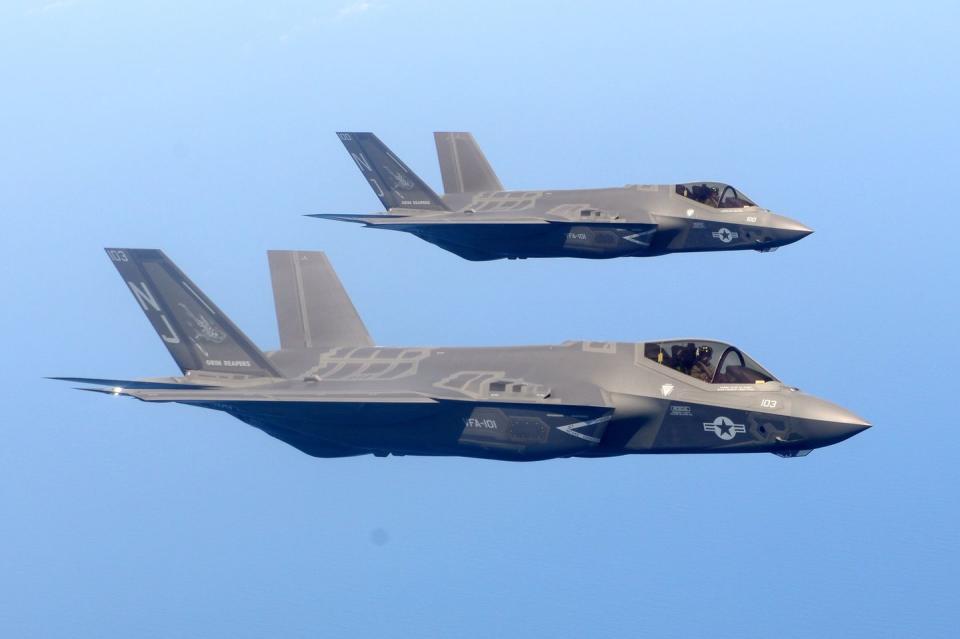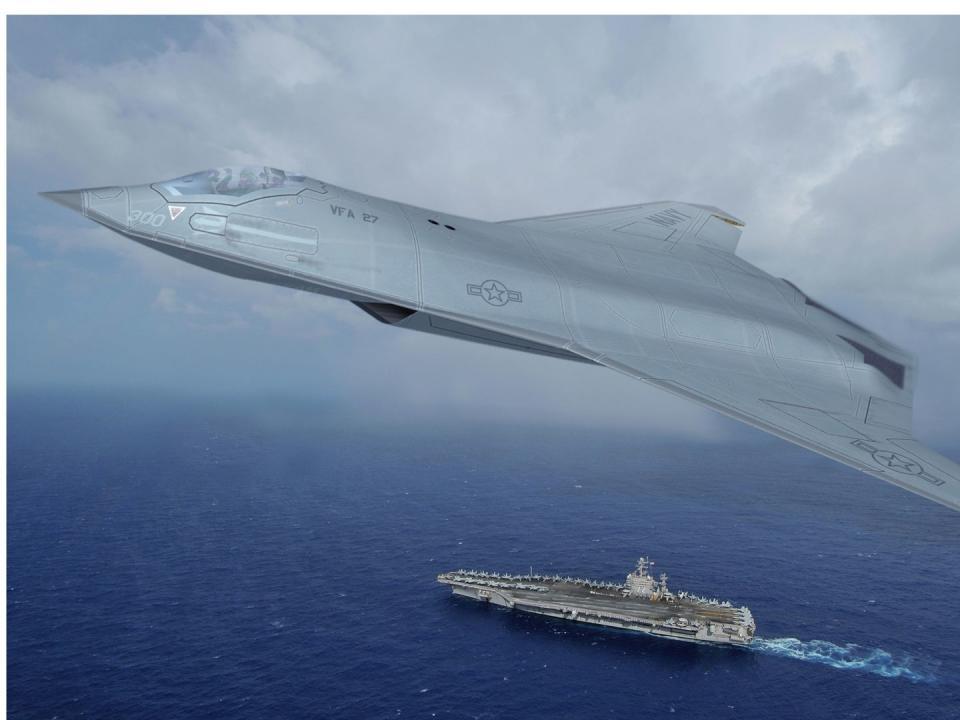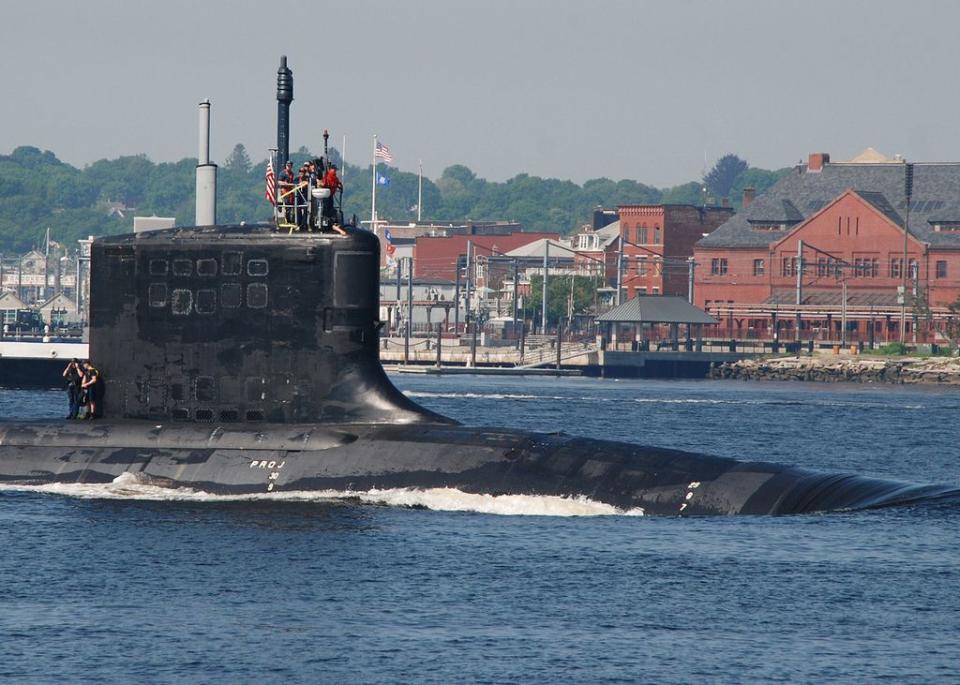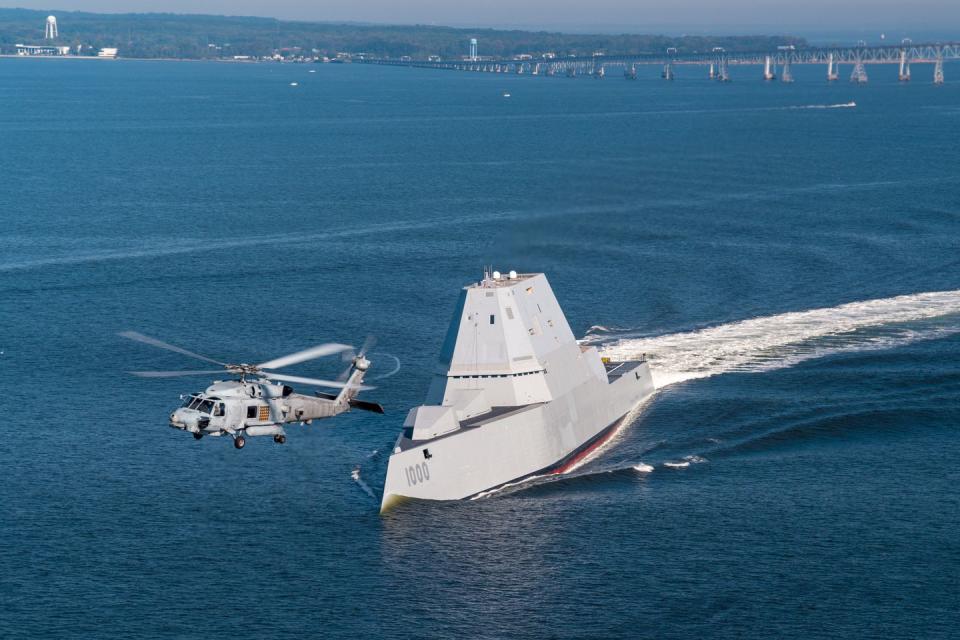New Fighter, Destroyer, or Sub? The Navy Can Only Afford One In 2023.
The Acting Secretary of the Navy told the service that it could only fund one of three next-gen weapons programs in 2023.
Three options are on the table: a new fighter, destroyer, or submarine.
Each plan has its place, but the Navy should probably prioritize submarines.
The U.S. Navy is nearing a funding crunch, and it can only afford to proceed with one of three possible next-generation development programs in 2023.
In a June 4 memo, Acting Secretary of the Navy Thomas Harker informed the service that it would have to get picky about its next modernization project. The current options on the table include new attack submarines, destroyers, or fighter jets. Congress will approve funding for one program, placing the other two on hold.
✈︎ Don't miss our best-in-class military stories. Join our squadron.

Harker stated he was acting, "in line with recently reissued fiscal guidance from the Office of the Secretary of Defense," according to a report in Defense News. Harker wrote:
The Navy cannot afford to simultaneously develop the next generation of air, surface, and subsurface platforms and must prioritize these programs, balancing the cost of developing next-generation capabilities against maintaining current capabilities...the Navy should prioritize one of the following capabilities and re-phase the other two after an assessment of operational, financial and technical risk.
The three programs Harker is referring to include the Navy's Next Generation Air Dominance fighter jet program (NGAD); the replacement for the Virginia-class attack submarine, SSN(X); and the next-generation destroyer program, DDG(X). The Navy wants new versions of each weapons system as it reorients itself away from the land conflicts of the early 21st century. Now, the service is focused on confronting technologically advanced adversaries such as Russia and China.
Three examples come to mind:
Lockheed Martin designed the F-35 Joint Strike Fighter to fill aircraft carrier flight decks affordably, but the Navy now needs a fighter better suited for squaring off against advanced air defenses and other fighters.
Meanwhile, the Virginia-class attack submarine is a good sub, but it has a smaller magazine and can't dive as deep as its predecessor, the Seawolf class.
And then there are the Burke-class destroyers, built after the Cold War to focus on land missions. But, that narrow fixation eventually became a weakness, to the point where the service built many of the destroyers without the much-needed ability to launch anti-ship missiles.
➡️ Option #1: Fund the NGAD Program

The Navy's NGAD program will replace early model F/A-18E/F Super Hornet strike fighters in the 2030s. NGAD could involve both crewed and uncrewed aircraft working together to take on aerial threats. A manned NGAD fighter could fly alongside a semi-autonomous "loyal wingman" drone to outfox enemy fighters. Aircraft carriers in the 2030s would likely operate a 50/50 mix of NGAD and F-35C fighters.
➡️ Option #2: Fund the SSN(X) Program

The SSN(X) program goal is to develop the successor to the Virginia-class nuclear-powered attack submarines. SSN(X)'s emphasis will be on deep water operations against high-end adversaries. It will dive deeper than the Virginias, to counter enemy subs operating at greater depths, and will likely include a strengthened hull for operating under arctic ice. The service will fit the SSN(X) with more torpedo tubes—carrying more missiles and torpedoes—to give sub skippers the ability to quickly engage with more threats of greater variety.
➡️ Option #3: Fund the DDG(X) Program

DDG(X) is meant to replace both the guided-missile cruisers and destroyers in the U.S. surface fleet, protecting carriers and amphibious ships from aerial threats. The current Arleigh Burke destroyers, which have been in nearly continuous production since the late 1980s, are excellent warships. However, they're nearly maxed out from a design perspective. If the Navy wants to add new technologies that have evolved over the past 30 years—such as the ability to deploy undersea drones, launch hypersonic missiles, or generate additional power for lasers or railguns—it will need a new ship.
Our Call: Fund SSN(X), Because We Need New Submarines
There's a compelling argument for funding each of the three programs, and ideally the Pentagon should be able to accommodate all three. But, assuming the guidance holds, and the Navy must pick one program, which should it choose?

If the Navy must proceed with one program, there's a strong case for SSN(X). The primary threat to the U.S. Navy in a future major conflict would be enemy aircraft carriers, amphibious ships, submarines, and other surface ships. The primary threat to those platforms is a submarine.
Submarines are competitive against all enemy naval threats—subs can even counter an adversary's naval air power by sinking their aircraft carriers. There's also a historical basis for this: during World War II, America's submarines fighting in the Pacific accounted for just 1.6 percent of the Navy's manpower, but still sunk more than half of the enemy ships.
The U.S. Navy's fighters, submarines, and destroyers are generally quite good, but the rise of the Chinese military and Russian aggression in Europe means all three could use a do-over. Now, it looks like just one—for now, anyway—will get the nod.
Here's hoping the admirals choose wisely.
🎥 Now Watch This:
You Might Also Like

